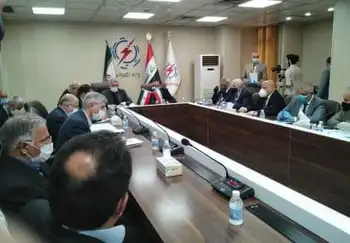Tres Amigas asks FERC for negotiated rates
By Restructuring Today
Protective Relay Training - Basic
Our customized live online or in‑person group training can be delivered to your staff at your location.

- Live Online
- 12 hours Instructor-led
- Group Training Available
The firm also filed an application asking FERC to continue its policy of not regulating the ERCOT grid in Texas even with the new project — that would allow renewable energy to flow into and out of the state.
"The need for new transmission to take America's renewable energy from its point of generation in remote areas to where it is needed is self evident," said Tres Amigas CEO Phil Harris. "By enabling the exchange of wind, solar and geothermal power between all three grids, the Tres Amigas SuperStation will help break our nation's transmission bottleneck."
Harris used to be the CEO of PJM. He is a native of New Mexico and the state offers the only place on the map where the three interconnections come together.
The SuperStation in Clovis, NM, is akin to a traffic rotary circle that would include three substations to convert the AC power from the transmitting interconnect to DC that would then flow to another substation and be converted back to AC power and synched to the receiving grid.
That conversion would be accomplished by voltage source converters and the power would be piped between them using underground superconductor cables. Buried transmission cables reportedly use up less space and have lower line loss.
The project will also feature batteries to store renewable energy and provide ancillary services.
Initially the project will be designed to handle about 5 gw of transfer capability — expandable to 30 gw.
The project is completely different from anything that came before it and thus its FERC-approved rates would have to be different, too. It doesn't have any captive customers and it is outside of any RTO with an Open Access Transmission Tariff it could function under.
The project would cost $1 billion to design and build and Tres Amigas needs a way to recoup that investment. The firm asked FERC for more pricing flexibility than it has given other merchant projects.
It wants to set up open season auctions for transmission rights over different blocks of time. The firm plans to make 80% available before commercial operation begins in 2014 with the other 20% saved for shorter-term transmission rights.
Tres Amigas plans to file an open access transmission tariff with FERC and it could sell transmission rights bilaterally with anchor customers.
The project isn't needed to balance the variability of intermittent resources on interconnections that already very large — but more to facilitate energy transactions between them, Tres Amigas CFO Russell Stidolph told us.
The firm received letters of intent from four utilities that want to build lines to the proposed hub, he added, but much of it hinges on the notion that if it's built, customers will come.
FERC filings listed PNM, Southwest Public Service, AEP and MidAmerican Energy joint venture Electric Transmission America and ITC Grid Development as the four utilities.
The project would lead to more efficient generation choices being made, causing the price differences between markets in ERCOT, WECC and the Eastern Interconnection to shrink, said the firm. Tres Amigas has talked to other firms about building lines to the hub so it can interconnect with markets in California, the Southwest Power Pool and others.
Tres Amigas has engaged ERCOT utilities that are building Competitive Renewable Energy Zone (CREZ) transmission lines in preliminary discussions to extend them to the site one mile from the Texas border. But the Texas utilities don't believe the PUC would ever approve linking up with the project without FERC foreswearing an application of its authority over the Texas grid.
The project wouldn't lead to any "commingling" of power between ERCOT and interstate grids due to the DC ties between the three substations, Tres Amigas FERC Counsel David Raskin told us. That term was used to give the old Federal Power Commission authority over Florida's grid in a Supreme Court case.
ERCOT has connections with the Eastern Interconnect and the Mexican grid that could result in commingling and FERC declined to use its authority in response to them.
Since FERC foreswore its authority over the connections with the eastern grid, Texas forced its utilities to unbundle, meaning the purely transmission entities wouldn't qualify as federal public utilities since they don't sell power. That could prevent Tres Amigas from applying that precedent, said Raskin.
The project is entirely different from anything else that has come up for FERC approval before, Raskin said, and the commission should continue ERCOT's exemption in this unique case. Nobody at FERC or in Texas wants to change the regulatory status quo, he added.











